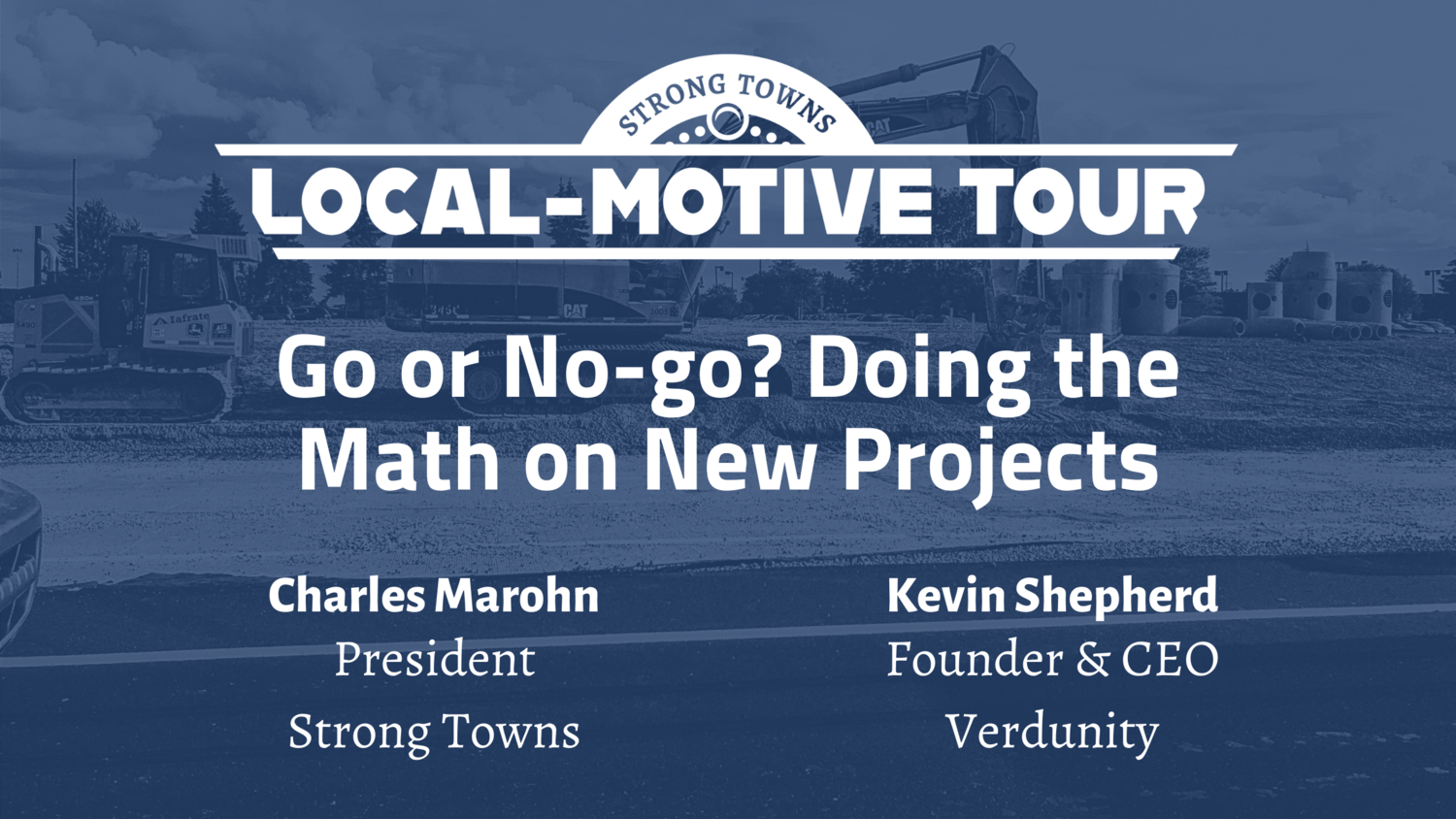Two Videos Available Now: Doing the Math on New Projects & “How to Talk to a NIMBY”
One of the core features of a strong town—it’s right there in the Strong Towns Strength Test—is that before building or accepting new infrastructure projects, local leaders run the numbers to clearly identify how future generations will be able to maintain them. We call this “doing the math,” and it is an essential filter for separating productive growth from the kind of growth that leads a city down the road to insolvency. But what’s the threshold between “go” and “no-go”?
Another core feature of a strong town is that it is allowed to grow incrementally. Senior Editor Daniel Herriges wrote about this year when he unpacked Strong Towns’ two-part rule of productive growth: No neighborhood can be exempt from change. But no neighborhood should experience sudden, radical change. Okay, but what if you’re advocating for a change you just know will make your town stronger...and then encounter resistance from that one neighbor (you know who we’re talking about) who always seems to be the fly in the ointment? These folks are sometimes labeled NIMBYs (for “Not in My Backyard”). But they’re fellow residents nevertheless, with passionate opinions about the future of your community.
These two dilemmas—how to evaluate a new project, and how to talk with a NIMBY—are challenges Strong Towns advocates like you will face. But they don’t have to be barriers; in fact, they could be opportunities.
As part of our Local-Motive Tour, we have two webcasts on these topics from two trusted guides. While most of our tour stops are broadcast live (and then available in archive forever), these pre-recorded sessions are available right now for round-trip ticket holders.
Go or No-Go? Doing the Math on New Projects
In this webcast, Kevin Shepherd, the founder of Verdunity, and Strong Towns president Chuck Marohn, talk about how cities should evaluate the long-term costs and potential return of infrastructure projects.
When is a new project worth it? What costs now and in the future need to be accounted for and how can leaders ensure they uncover all of these before they get to work? This presentation will show you how to answer these projects and decide, “Go or no go?” for any proposed project in your community.
This is important math for local leaders and government staff, but it’s also vital for residents to keep tabs on their tax dollars and those in power. Shepherd—a licensed engineer with over 26 years of experience in engineering, planning, site development, and municipal finance—has a wealth of experience helping communities learn to do the math. Participants will also get an Action Guide they can use to help them think through new projects in their community.
How to Talk to a NIMBY
In this session, Strong Towns program director Rachel Quednau is joined by John Reuter. Reuter was the city council president in Sandpoint, Idaho, where he also cofounded a weekly newspaper, and he’s now a Strong Towns board member.
Quednau and Reuter discuss why, if we’re going to build strong towns, we need everyone on board. In this presentation, you’ll learn about how to find common ground and push through challenging barriers to get stuff done. And you’ll hear from a local leader who has experience bringing together all sorts of people to accomplish important community goals.
The Local-Motive Tour kicked off today, with more than 400 people attending an event on “picking your next bike lane battle,” featuring Ashwat Narayanan of Our Streets Minneapolis. Remember that when you purchase your round-trip ticket, you’ll receive live access to all eight tour stops, immediate access to the two additional webcasts featuring Kevin Shepherd and John Reture, and lifetime access to the full archive of tour stops.
Are you ready to get on board?


